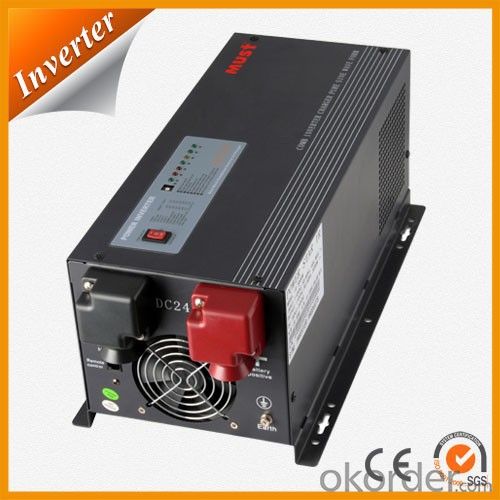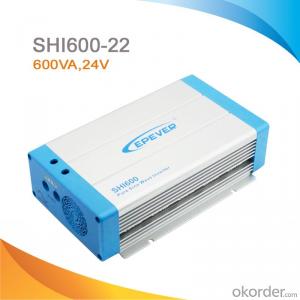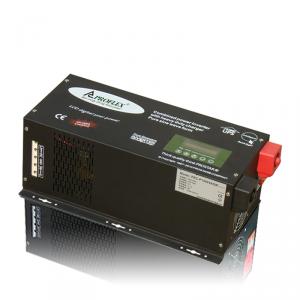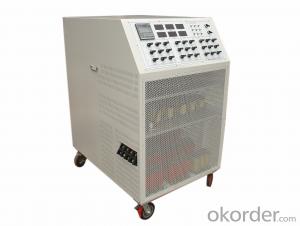5kV Solar Inverter - Pure Sine Wave Inverter Home Inverter 600-3500W
- Loading Port:
- China main port
- Payment Terms:
- TT or LC
- Min Order Qty:
- 100 pc
- Supply Capability:
- 1000 pc/month
OKorder Service Pledge
OKorder Financial Service
You Might Also Like
| Home Inverter 600-3500W |
Home Inverter 600W-3500W is Pure sine wave output inverter which are specially used for house appliance such as TV, refrigerator, fan, air conditioner etc, and also it can be used as UPS for computers. That means It can supply power to various loads such as resitive load, inductive load, motors and rectifier load. It is equipped with programmable big current, 3 stages battery charger (10-70Amp adjustable charger) to run 10hrs longer backup time. |
● Reliable, Durable and Economical Power for Grid and Mobile Applications
● Microprocessor based Inverter / Charger provides
● Ultra-clean pure sine wave output with less than 5% total harmonic distortion
● Supply energy to various loads such as resistive load, inductive load, motors and rectifier load.
● Control panel with large LCD
● Powerful 300% surge power
● Low sleep mode power consumption of less than 5W
● Phase & frequency synchronization auto-tracing for seamless transfer time
● Programmable big current, 3 stages battery charger
● Long backup time up to 10 hours (based on the battery bank and loads).
● Easy to install, easy to maintain, and built for years of reliable service
Q. How long the UPS to run when power goes?
This can take 3 paths.
1.You can pick a UPS that is rated for pretty much the full VA you need so it will be running at 100% of capability and will thus last 'n' minutes.
2.You can pick a UPS that is rated at a much higher VA value than you really need so, for example, is running at 50% of capability and will thus last for longer than the UPS from option 1.
3.You can use extra external battery packs to run for longer. If charging capability allows, the more and the bigger batteries you take with, the longer time UPS runs.
or using a generator after about 6 hours, it will be more cost-effective, with a short runtime UPS to bridge the generator start-up gap.Q. What's lifetime of a UPS ?
Most plug-in UPS are workable for at least five years. We'd advise you to change the batteries every three to four years. For larger equipment, we maintain equipment for twenty years old and still going strong.
Q. How to maintain a UPS ?
There are three simple methods: Never overload your UPS, never connect any home electronic devices such as cooling fan to your UPS. This may cause malfunction of your UPS. Discharge the battery in a consistent interval, once a month or once two months. You can do this by turning on the UPS without connecting the mains.

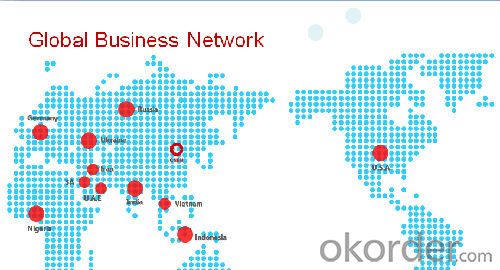
- Q: What is the role of a grid-tie inverter in a solar PV system?
- The role of a grid-tie inverter in a solar PV system is to convert the direct current (DC) electricity generated by the solar panels into alternating current (AC) electricity that can be used to power electrical devices in a home or business. In a solar PV system, the solar panels produce DC electricity when exposed to sunlight. However, most homes and businesses use AC electricity, which is the standard form of electricity provided by utility companies. This is where the grid-tie inverter comes in. The grid-tie inverter takes the DC electricity produced by the solar panels and converts it into AC electricity that is compatible with the electrical grid. It ensures that the electricity generated by the solar panels is synchronized with the utility power and can be seamlessly integrated into the existing electrical system. One of the key functions of a grid-tie inverter is to match the frequency, voltage, and phase of the AC electricity generated by the solar panels with that of the utility power. This synchronization is crucial to ensure a smooth flow of electricity between the solar system and the grid, and to prevent any disruptions or damage to the electrical system. Additionally, a grid-tie inverter also monitors the electrical grid for safety reasons. It constantly checks the grid for any voltage or frequency fluctuations and can automatically disconnect from the grid in the event of a power outage or grid failure. This feature is important to protect the safety of electrical workers who may be repairing the grid during an outage. Furthermore, a grid-tie inverter allows for net metering, which is a billing arrangement where excess electricity generated by the solar system can be fed back into the grid. This means that if the solar system produces more electricity than is being used, the excess energy can be sent back to the grid and the homeowner or business owner can receive credits for the excess energy produced. This can help offset energy costs and potentially result in monetary savings. Overall, the grid-tie inverter plays a vital role in a solar PV system by converting the DC electricity generated by the solar panels into AC electricity that can be used to power electrical devices, ensuring synchronization with the electrical grid, monitoring the grid for safety, and enabling net metering for potential financial benefits.
- Q: Can a solar inverter be used with different types of solar panels?
- Yes, a solar inverter can be used with different types of solar panels as long as the voltage and current specifications of the panels are compatible with the inverter.
- Q: What is the efficiency of a solar inverter?
- The efficiency of a solar inverter refers to how effectively it converts the direct current (DC) power generated by solar panels into alternating current (AC) power that can be used to power household appliances or be fed back into the grid. It is typically measured as a percentage and represents the amount of DC power that is successfully converted into usable AC power. A higher efficiency indicates a more effective conversion process, resulting in less energy loss and maximizing the overall output of the solar system.
- Q: How does shade affect the performance of a solar inverter?
- Shade significantly impacts the performance of a solar inverter by reducing the overall energy production. When a solar panel is partially shaded, it creates multiple voltage levels throughout the array, leading to a decrease in the overall power output. This shading effect causes the inverter to work inefficiently as it struggles to optimize energy conversion. Consequently, shade can significantly hinder the performance and efficiency of a solar inverter.
- Q: Can a solar inverter be integrated with a smart home system?
- Yes, a solar inverter can be integrated with a smart home system. This integration allows for monitoring and controlling the solar energy production, as well as optimizing energy usage and managing the overall efficiency of the system.
- Q: Can a solar inverter be used in a community solar project?
- Yes, a solar inverter can be used in a community solar project. A solar inverter is an essential component of a community solar project as it converts the direct current (DC) electricity generated by the solar panels into alternating current (AC) electricity, which can be used by the community or fed back into the grid.
- Q: Are there any ongoing maintenance requirements for a solar inverter?
- Yes, there are ongoing maintenance requirements for a solar inverter. Regular inspections, cleaning, and monitoring of the inverter's performance are necessary to ensure its optimal functioning. Additionally, checking for any loose connections, updating firmware, and addressing any potential issues promptly are part of the maintenance routine.
- Q: What is the role of a solar inverter in a grid-tied system?
- The role of a solar inverter in a grid-tied system is to convert the direct current (DC) electricity generated by the solar panels into alternating current (AC) electricity that is compatible with the electrical grid. It also ensures the synchronization and stability of the solar power system with the grid, allowing excess energy to be fed back into the grid and enabling the system to draw power from the grid when needed.
- Q: How does a solar inverter synchronize with the electrical grid?
- A solar inverter synchronizes with the electrical grid by constantly monitoring the voltage and frequency of the grid. It adjusts its own output voltage and frequency to match the grid's, ensuring that the electricity generated by the solar panels is in phase and synchronized with the grid. This synchronization allows the solar power to be seamlessly integrated into the grid, enabling efficient power transfer and preventing any disruption to the supply.
- Q: Can a solar inverter be connected to a computer or smartphone?
- Yes, a solar inverter can be connected to a computer or smartphone. Many modern solar inverters come with built-in Wi-Fi or Bluetooth capabilities that allow them to connect to these devices. Through dedicated mobile apps or software, users can monitor their solar system's performance, adjust settings, and receive real-time data and alerts directly on their computer or smartphone.
Send your message to us
5kV Solar Inverter - Pure Sine Wave Inverter Home Inverter 600-3500W
- Loading Port:
- China main port
- Payment Terms:
- TT or LC
- Min Order Qty:
- 100 pc
- Supply Capability:
- 1000 pc/month
OKorder Service Pledge
OKorder Financial Service
Similar products
Hot products
Hot Searches
Related keywords






